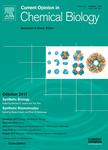版权所有:内蒙古大学图书馆 技术提供:维普资讯• 智图
内蒙古自治区呼和浩特市赛罕区大学西街235号 邮编: 010021

作者机构:Emory Univ Dept Pathol & Lab Med Atlanta GA 30322 USA Emory Univ Dept Biochem Atlanta GA 30322 USA
出 版 物:《CURRENT OPINION IN CHEMICAL BIOLOGY》 (Curr. Opin. Chem. Biol.)
年 卷 期:2014年第18卷第1期
页 面:55-61页
核心收录:
学科分类:0710[理学-生物学] 071010[理学-生物化学与分子生物学] 081704[工学-应用化学] 07[理学] 08[工学] 0817[工学-化学工程与技术]
基 金:NHLBI NIH HHS [T32 HL069769] Funding Source: Medline NIGMS NIH HHS [P41 GM103694] Funding Source: Medline
主 题:GLYCANS PROTEIN microarrays IMMUNITY CARRIER proteins PROTEIN-protein interactions MICROARRAY technology
摘 要:Host immunity represents a complex array of factors that evolved to provide protection against potential pathogens. While many factors regulate host immunity, glycan binding proteins (GBPs) appear to play a fundamental role in orchestrating this process. In addition, GBPs also reside at the key interface between host and pathogen. While early studies sought to understand GBP glycan binding specificity, limitations in the availability of test glycans made it difficult to elucidate a detailed understanding of glycan recognition. Recent developments in glycan microarray technology revolutionized analysis of GBP glycan interactions with significant implications in understanding the role of GBPs in host immunity. In this review, we explore different glycan microarray formats with a focus on the impact of these arrays on understanding the binding specificity and function of GBPs involved in immunity.